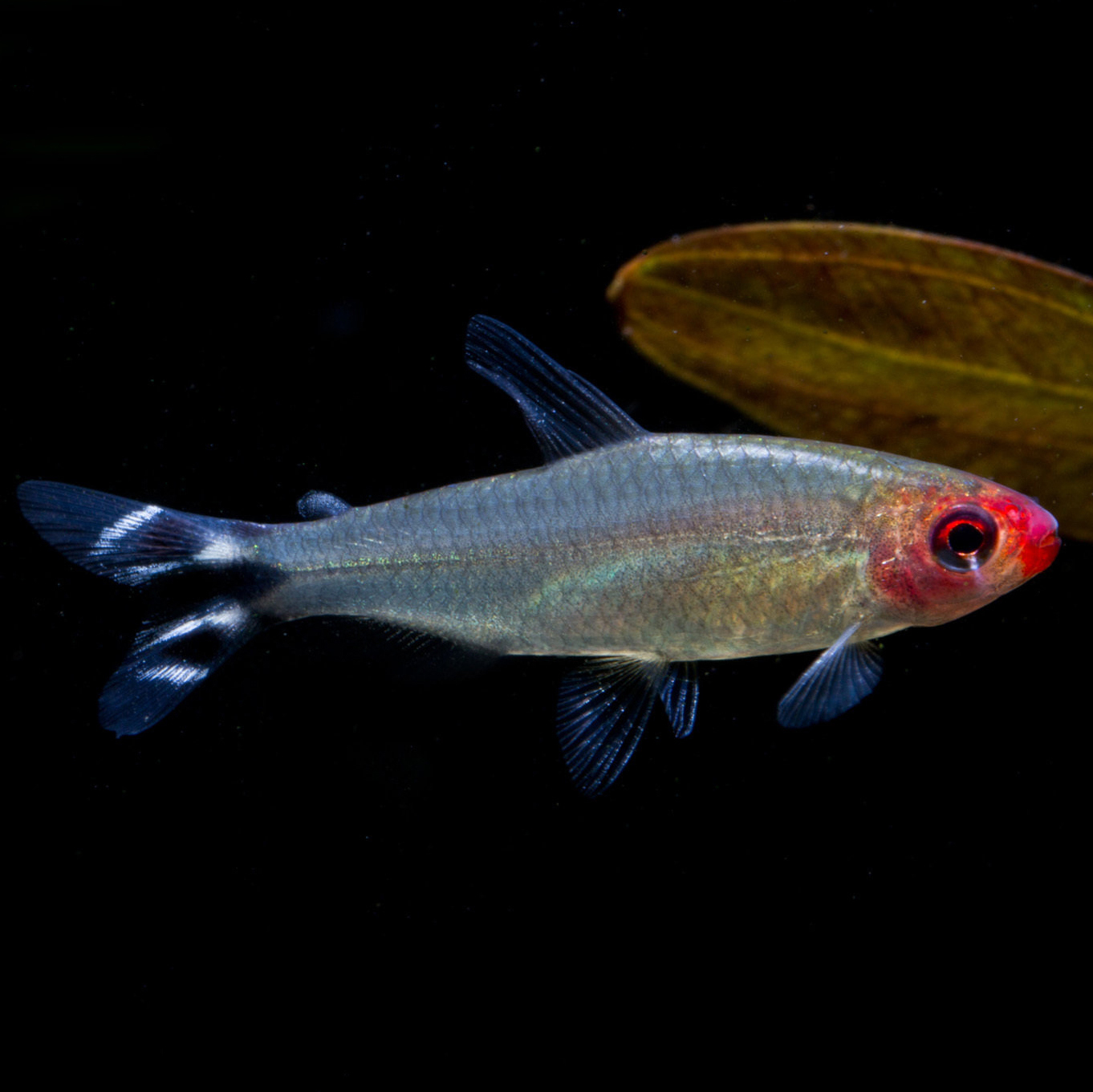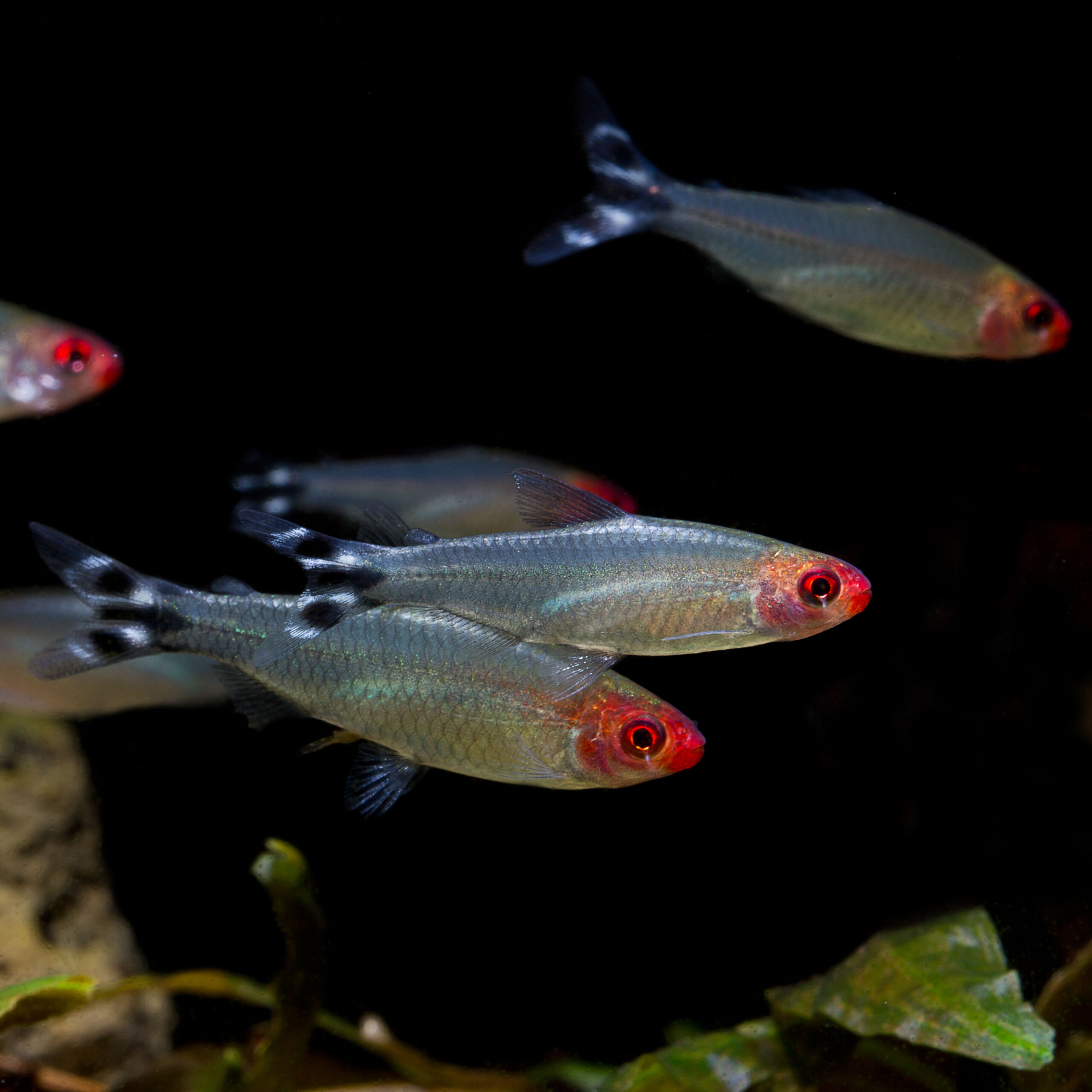Rummy-nosed Tetra
Hemigrammus bleheri
The Rummy-nosed Tetra is one of the real schooling fish and lives up to its name with its bright red head.
- intense red colored head
- pretty, contrasting pattern on the tail fin
- very harmonious looking schooling fish
1 in stock
 Delivery in a few working days
Delivery in a few working days
 Free shipping from €60 across Austria
Free shipping from €60 across Austria





Important data
Product description & details
The Rummy-nosed Tetra, scientifically known as Hemigrammus bleheri, is native to the western part of the Amazon basin in South America. This small and peaceful fish is characterized by its bright red head color and black and white patterned tail fin, which contrast beautifully with its silver body. The Rummy-nosed Tetra is one of the few true schooling fish in freshwater aquariums. In contrast to most schooling fish in freshwater, which are “fake” schooling fish and only form into schools in dangerous and stressful situations, real schooling fish such as the Rummy-nosed Tetra live permanently in schools and cannot cope as individual animals.
Care in the aquarium
Hemigrammus bleheri should be kept in the aquarium with at least 10 conspecifics and requires a tank with at least 80cm (better 100cm) edge length. A larger swarm in a correspondingly large aquarium not only increases the well-being of the Rummy-nosed Tetra, but also appears very harmonious and is beautiful to look at. The tetra, which grows up to 5cm in size, prefers acidic and soft water below 8°dGH and should be kept at a temperature between 23 and 27°C. Since this species is very sensitive to high nitrate levels in the water, good filtration and regular water changes are essential. The Rummy-nosed Tetra also feels comfortable in a tank that is not too bright, with a fine, ideally dark substrate and dense edge planting, which offers hiding places but leaves enough free swimming space. This peaceful and sociable fish can easily be socialized with other peaceful, similarly sized fish.
Feeding
In nature, Hemigrammus bleheri feeds primarily on small invertebrates and other aquatic animals. In the aquarium, this tetra happily accepts live and frozen food such as mosquito larvae, artemia or daphnia, but also conventional, fine ornamental fish food.
Sexual characteristics and breeding
Male Rummy-nosed Tetras are slightly slimmer than their female counterparts, but otherwise do not differ visibly from them. For successful breeding, the breeding tank should be as dark as possible and the water should be around 28°C, soft and rather acidic. As a free-spawner, the Rummy-nosed Tetra lays its eggs between aquatic plants or in moss pads and does not care for the brood. Since adults often eat the eggs and fish larvae, we recommend using a spawning grid or a separate breeding tank from which the parents are removed after laying their eggs. A low pH value and humic substances inhibit fungal attack on the eggs. A few days after fertilization, the fish larvae hatch and feed on the yolk sac for another 4-5 days. The young fish then need very small food such as microorganisms or rotifers. Shortly after the young are free-swimming, they can be fed with newly hatched Artemia nauplii and Cyclops. It is important to ensure good water hygiene and the administration of humic substances, as the small Rummy-nosed Tetras are very susceptible to bacterial and fungal infestation.






